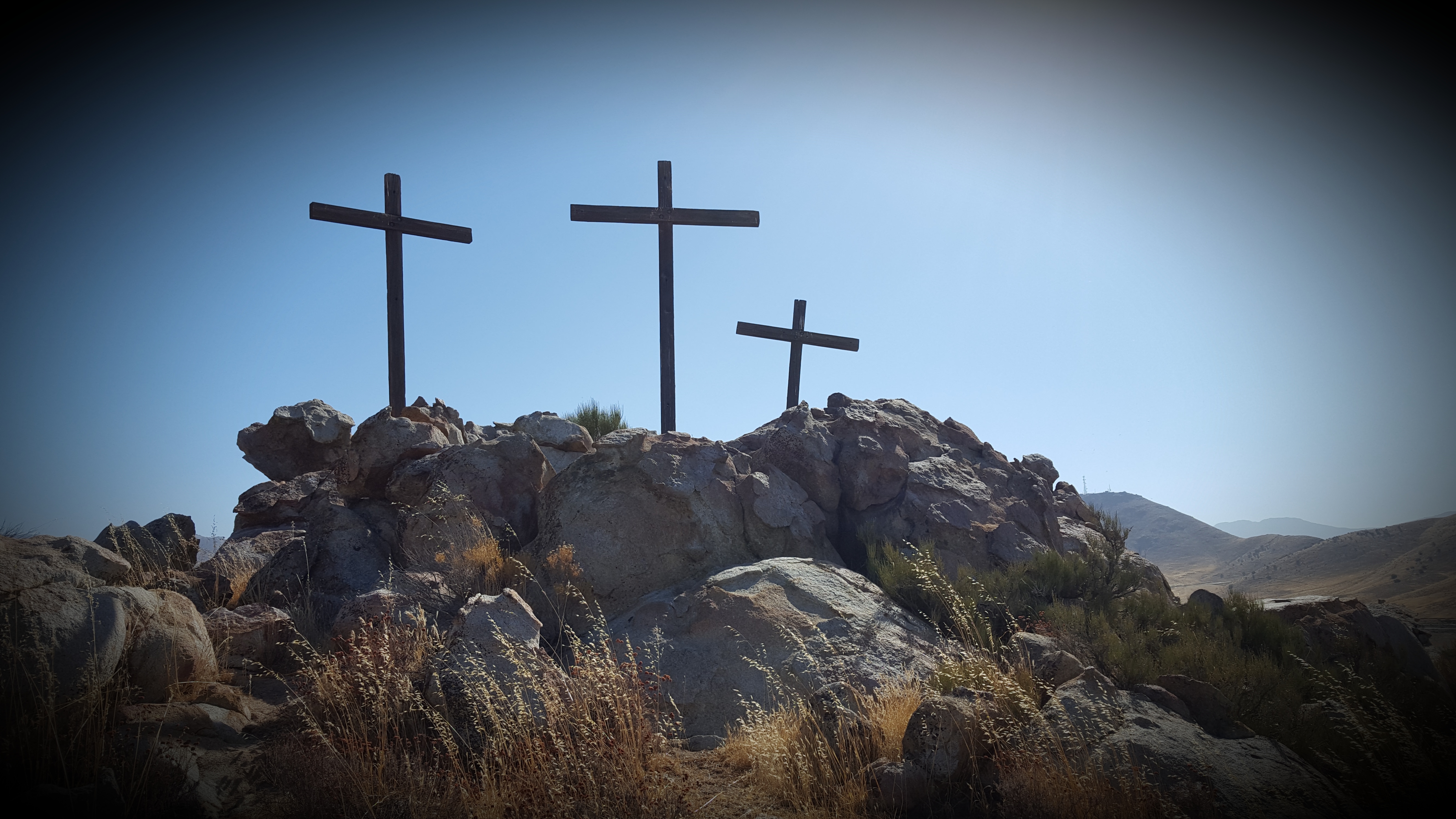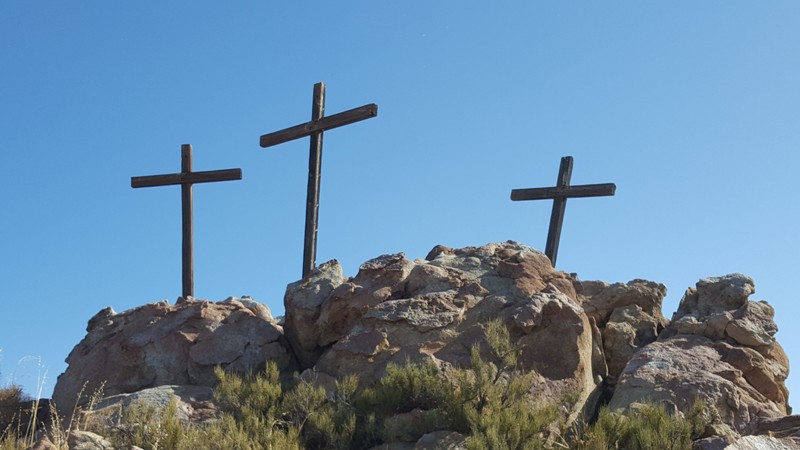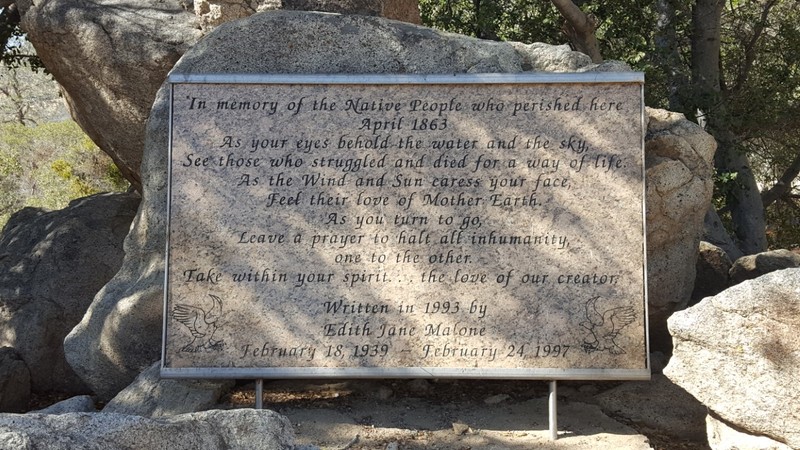Keyesville Massacre Memorial Site
Introduction
Text-to-speech Audio
Images
The three crosses represent the memorial for the Keyesville Massacre. The crosses are set a few miles away from the actual site, due to dangers trying to reach the site.

The crosses face Isabella lakebed.

A Memorial Stone recognizing the Keyesville Massacre is located at the Nuui Cuuni Inter-Tribal Cultural Center at 2600 Hwy 155 in Lake Isabella, CA.

Backstory and Context
Text-to-speech Audio
Located south of the major gold discoveries of the California Gold Rush, the southern end of the Sierra Nevada mountains nevertheless attracted prospectors, particularly after gold was discovered along the Kern River in 1853.1 The town of Keyesville sprang up where several deposits of gold were discovered, and, much like in other parts of the state, the influx of settlers into the region put a strain on the resources that local native tribes depended on for survival. This was common in many places throughout the state, and led to increased conflict between the settlers and Native Americans.
In the Owens Valley area east of the Kern River Valley, the conflict became the Owens Valley Indian War, which took place in 1862-1863, and was fought by California Volunteers and local settlers against Owens Valley Paiutes and their Shoshone and Kawaiisu allies. In the Kern River Valley, settlers reported that "a large body of Indians" had been stealing livestock and other property, as well as committing violent acts against settlers.2 It was also suggested that the ones causing the trouble were from outside of the area. The 2nd California Volunteer Cavalry arrived on the scene, led by Captain Moses A. McLaughlin, and after surrounding an encampment and separating out the "boys and old men," those who were suspected to be outsiders were "shot or sabered."3
It took years for the government to justify the cavalry's actions but according to local writer Bob Powers, "in 1893, the government gave land to the survivors of the tribe in a small attempt to right the injustice".4 The actual site of the massacre is reported to be dangerous to access, so the memorial site is located a few miles from it, and commemorated with three wooden crosses. Memorial services have been held annually at the site since at least the 1950s.
Cite This Entry
Karina Castro, Jessica Woods, Manny Medina and Kathleen Freeland. "Keyesville Massacre Memorial Site." Clio: Your Guide to History. July 6, 2017. Accessed August 13, 2025. https://theclio.com/entry/26811
Sources
2. "Keyesville Massacre Military Correspondence," Kern County Historical Society Quarterly, vol. 4a, no. 2, Nov 1952, pp. 5-8. http://vredenburgh.org/tehachapi/data/mclaughlin.htm
3. Bob Powers, North Fork Country. Westernlore Press, 1974, pp. 53-58. Powers's book incorporates military correspondence and excerpts from interviews and journals written by white settler and Native American families in the region to recount the incident.
4. Bob Powers, North Fork Country. Westernlore Press, 1974, pp. 58.

